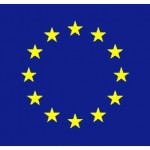 The transition from science to e-Science is happening: a data deluge emerges from publicly-funded research facilities; a massive investment of public funds into the potential answer to thegrand challenges of our times. This potential can only be realised by adding an interoperable data sharing, re-use and preservation layer to the emerging eco-system of e-Infrastructures. The importance of this layer, on top of emerging connectivity and computational layers, has not yet been addressed coherently at ERA or global level. All stakeholders in the scientific process must be involved in its design this layer: policy makers, funders, infrastructure operators, data centres, data providers and users, libraries and publishers. They need evidence to base their decisions and shape the design of this layer.
The transition from science to e-Science is happening: a data deluge emerges from publicly-funded research facilities; a massive investment of public funds into the potential answer to thegrand challenges of our times. This potential can only be realised by adding an interoperable data sharing, re-use and preservation layer to the emerging eco-system of e-Infrastructures. The importance of this layer, on top of emerging connectivity and computational layers, has not yet been addressed coherently at ERA or global level. All stakeholders in the scientific process must be involved in its design this layer: policy makers, funders, infrastructure operators, data centres, data providers and users, libraries and publishers. They need evidence to base their decisions and shape the design of this layer.

 ODE Press releases ODE plans ODE outputs
ODE Press releases ODE plans ODE outputs
ODE’s report on [Download not found] was presented at the European Parliament (Oct 20 2011) |
 |
| Salvatore Mele speaking at the APA 2011 conference |
ODE partners, all member of the Alliance for Permanent, collectively represent all these stakeholder groups and have a significant sphere of influence within those communities. The project will identify, collate, interpret and deliver evidence of emerging best practices in sharing, re-using, preserving and citing data, the drivers for these changes and barriers impeding progress, in forms suited to each audience. ODE will:
- Enable operators, funders, designers and users of national and pan-european e-Infrastructures to compare their vision and explore shared opportunities
- Provide projections of potential data re-use within research and educational communities in and beyond the ERA, their needs and differences
- Demonstrate and improve understanding of best practices in the design of e-Infrastructures leading to more coherent national policies
- Document success stories in data sharing, visionary policies to enable data re-use, and the needs and opportunities for interoperability of data layers to fully enable e-Science
- Make that information available in readiness for FP8
Objectives: An ever-increasing volume of data is being generated every day within the European Research Area (ERA), often at great expense. Scientific data are often created for a particular purpose, and are used just by their creators for that purpose. e-Science delivers the ability for, and thrives from, the sharing of data between research teams, institutions and disciplines across national borders, fully exploiting and adding significant value to those data. However, the full potential of e-Science can only be realized by a Scientific Data e-Infrastucture which indissolubly links a high-quality and reliable repository infrastructure in Europe with a renewed strategy for e-Science, e-Infrastructures, and innovation. It is vital that those responsible for financing, generating and preserving primary data take full advantage of the opportunities offered by e-Science and create an environment where datasets act as the pieces of a jigsaw. What is needed is the investment and effort: strategic, political and technical decisions are urgently required in order to shape the data sharing, re-use and preservation layers of this emerging e-Infrastructure, intended as an eco-system of digital repositories. Those decisions need to be guided by evidence based on current best practices and lessons learned from past and present initiatives. The purpose of this project is to provide the entire scientific community, the European Commission, national/regional funding agencies in the Member States and the designers of the e-Infrastructure of tomorrow, as well as all actors in the value chain of scholarly communication, with the ability to make and respond to informed decisions, across four objectives:
- To engage and raise the profile of data sharing, re-use and preservation as an issue with each of our target audiences or communities of interest (using an extensive communication strategy and analysing low-lying fruits)
- To capture the opinions and experiences of a critical mass of representatives from those communities (using our events and our early results)
- To undertake further, in-depth, investigation into the issues raised by those commentators where necessary (using the knowledge acquired from our events)
- To document our findings as thematic reports addressing key issues, such as those described above and those identified during the project (using the results of the investigations, our knowledge of the target audiences from the communication strategy)